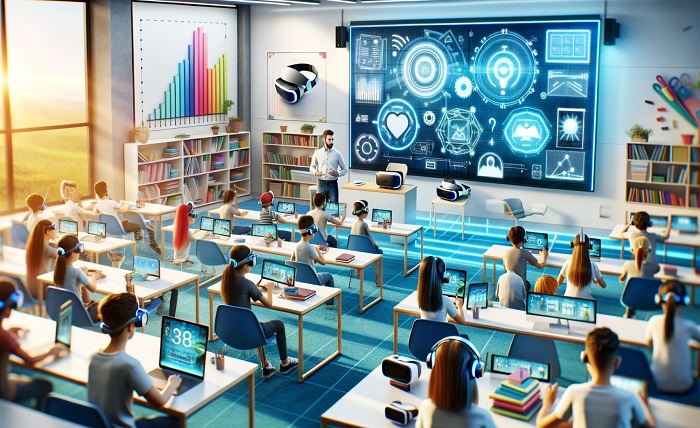In the fast-paced world of education, the integration of technology is no longer just an option—it’s a necessity. From interactive whiteboards to digital textbooks, technology has reshaped how teachers instruct and students learn. But one area that holds incredible potential yet often remains underutilized is educational software optimization. By enhancing the usability and effectiveness of these tools, educators can significantly boost both engagement and performance in classrooms.
Understanding Educational Software Optimization
To harness the full power of educational software, it’s crucial to understand what optimization means in this context. In simple terms, optimization involves tailoring software to better serve the specific needs of students and educators. This might mean adjusting settings to enhance accessibility, integrating additional resources, or using analytics to personalize the learning experience. The goal is to ensure that software not only supports educational objectives but also evolves with them.
One of the first steps in optimization is evaluating the software’s current performance. Educators can gather feedback from students and teachers to identify areas for improvement. By actively involving users in the optimization process, schools can foster a sense of ownership and increase the likelihood of successful implementation. Additionally, assessing technical aspects—such as loading times and user interface design—can reveal quick wins that make a significant impact.
The Role of Engagement in Learning
Engagement is a critical component of effective learning. When students are genuinely interested and invested in their studies, they are more likely to retain information and excel academically. Optimized educational software can play a pivotal role in enhancing engagement through interactive features, gamified elements, and personalized content.
One way to boost engagement is by incorporating multimedia elements into lessons. Videos, animations, and virtual simulations can make complex concepts more accessible and intriguing. For instance, students learning about the solar system might explore planets through a virtual reality headset, deepening their understanding and fueling their curiosity. Furthermore, software that adapts to students’ skill levels and interests can tailor learning experiences to each individual’s needs, maintaining motivation and enthusiasm.
Improving Classroom Performance with Technology
Performance in the classroom isn’t solely about grades; it’s also about developing critical skills and a lifelong love for learning. Educational software, when optimized effectively, can support both these objectives by providing diverse opportunities for practice, assessment, and feedback.
One of the key benefits of optimized educational software is its ability to offer real-time feedback. Instead of waiting for assignments to be graded, students can receive immediate insights into their progress. This timely feedback allows them to identify areas of improvement and adjust their approach accordingly. For teachers, this means less time spent marking papers and more time available for personalized instruction.
Additionally, optimized software can facilitate collaborative learning experiences. Through cloud-based platforms, students can work together on projects, share resources, and engage in discussions beyond the physical classroom. This not only enhances their academic skills but also prepares them for the increasingly interconnected world they will enter after graduation.
Strategies for Effective Software Optimization
Optimizing educational software requires strategic planning and implementation. One effective strategy is to conduct regular training sessions for teachers. By equipping educators with the knowledge and skills to use software effectively, schools can ensure that technological tools are being utilized to their full potential.
Another strategy involves leveraging data analytics to drive decision-making. Educational software often generates valuable data about student performance and engagement. Analyzing this data can provide insights into which features are most effective and which areas need improvement. Schools can then make informed decisions about software customization and resource allocation.
Furthermore, building a supportive community around educational software is essential. Schools can create forums and workshops where teachers, students, and parents share their experiences and best practices. This collaborative approach fosters a culture of continuous improvement and innovation.
Overcoming Challenges in Software Optimization
Despite its benefits, optimizing educational software is not without challenges. Issues such as budget constraints, resistance to change, and concerns about data privacy can hinder progress. However, by addressing these challenges proactively, schools can create a conducive environment for successful optimization.
To tackle budget constraints, schools can explore partnerships with software providers or seek grants specifically aimed at educational technology initiatives. Demonstrating the long-term benefits of optimization, such as improved student outcomes and reduced administrative workload, can also help secure funding.
Addressing resistance to change requires effective communication and collaboration. Educators and administrators should be involved in the decision-making process from the outset and provided with ongoing support and training. By highlighting the positive impact of optimization on teaching and learning, schools can build buy-in and enthusiasm.
Conclusion
Educational software optimization is a powerful tool for transforming traditional classrooms into dynamic hubs of learning. By boosting engagement and performance, optimized software empowers both students and educators to reach their full potential. While challenges exist, schools that invest in strategic planning, training, and collaboration will reap the rewards of a more interactive and effective educational environment. For those looking to make a significant impact, now is the time to explore the possibilities of educational software optimization and build your PC for the future of learning.
By focusing on these strategies and leveraging innovative technologies, educators can unlock new opportunities for growth and achievement in the classroom.






